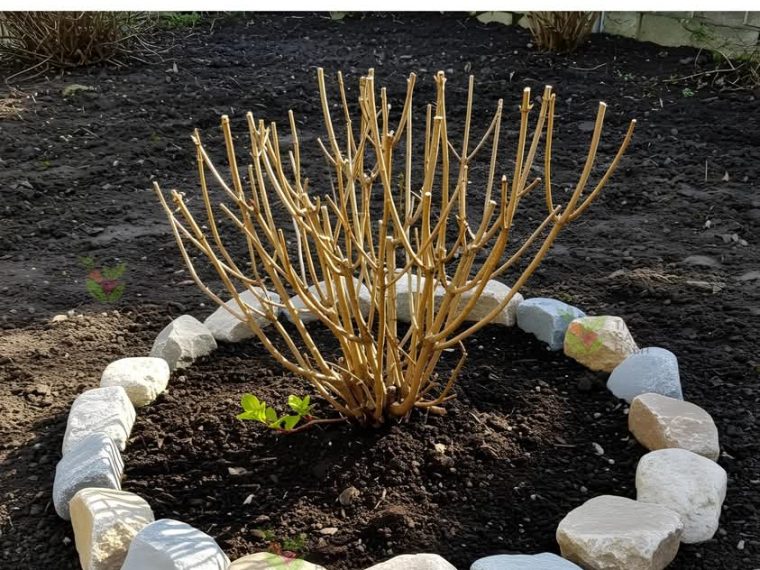Though gardeners on the internet may have made you feel that pruning hydrangeas is the most difficult thing you’ll ever do, I can assure you it’s really not.
Today, I’ll be teaching you how and when you should prune your hydrangeas for the best flowering results. Trust me, your hydrangeas will explode with blooms after this!
Without wasting any further time, let’s dive right into it!
- Don’t forget to read the comments. I answered a lot of questions there!
Why Is Pruning Essential For Hydrangeas?

When beginners are taught about pruning, they’re often told that it’s all about cutting the plant and making it smaller visually. However, pruning actually helps the plant grow better.
When you prune, you remove dead and weak branches, leaves, and unwanted parts of the plant that were doing nothing but placing unnecessary stress and weight on it.
Dense branches and foliage limit air circulation around the plant, making it more susceptible to fungal diseases. Pruning ensures the prevention of such diseases and mold.
Removal of dead wood and old stems renews old hydrangea plants and promotes new growth. You also get the benefit of promoting stronger stem growth that can support heavy blooming.
Find out here when Hydrangeas bloom (it’s important to know!).
How To Prune Hydrangeas? Let’s Start!

First and foremost, before we get to the actual pruning part, it’s very important that you gear yourself up. You’ll be needing:
- A clean pair of pruning shears or scissors;
- A pair of gloves to prevent small nicks and cuts.
Also, before you prune, try to identify the type of hydrangea you’re working with first. If you already know, that’s great. But if you don’t, spend some time figuring it out. You’ll find out why it’s important to know this in just a second.

Bigleaf Hydrangeas:

This hydrangea variety tends to bloom on last year’s growth. The best time for pruning Bigleaf hydrangeas right after it finishes blooming, which will vary depending on where you live!
- In warmer zones (8–9): Blooming starts earlier, so you can prune from late spring to early summer.
- In cooler zones (5–7): Blooms may last into mid to late summer, so hold off pruning until after flowering ends.
Avoid pruning in fall, winter or early spring, as this can remove next year’s flower buds and reduce blooming. Also, avoid cutting back too hard though; just some light shaping after flowering should be enough.
Oakleaf Hydrangeas:


The same applies to smooth hydrangeas, which also bloom on new wood and benefit from the removal of last year’s stems and foliage. Put more emphasis on tidying up the shape of this hydrangea variety when pruning.
- In all zones (3 to 9): Prune in late winter or early spring, while the plant is still dormant.
But, with smooth hydrangeas, you really want to focus on tidying up the shape of the plant. So, don’t be afraid to cut back the stems close to the base; this keeps the plant looking full and balanced! Trust me, you’ll thank me in the summer, when it starts blooming!
How To Prune Hydrangeas? Avoid These 4 Fatal Errors!
1: Pruning At The Wrong Time

Avoid pruning at the wrong time. If you don’t know when to prune your particular hydrangea variety, read my work or search the internet for some answers. This is a mistake that can ruin an entire season of blooms!
2: Using Blunt Or Bad Pruning Tools

Avoid blunt or bad pruning tools at all costs. If you’re dealing with rust or excessive dirt and grime on your pruning tools, either clean them properly or replace them with new ones. Nothing spreads fungal diseases as quickly as bad gardening tools.
3: Over Pruning

Less is more, especially with old wood hydrangea varieties. Pruning should only be done when and where it’s needed.
4: Pruning Newly-Planted Hydrangeas

Don’t go around pruning every hydrangea in sight; young ones don’t handle heavy pruning very well. Give them the time they need to settle properly.
Conclusion

When it’s your first time, pruning your hydrangeas can seem like a daunting task. I mean… What if you hurt the plant? Make a wrong cut? Possibly kill it?
All these questions and worries may be flooding your mind right now, but I need you to know that it’s a skill. It’s a skill that you can hone and get better at pruning as you do it more often.
Get your approach right, prepare your tools, and, most importantly, be gentle. Your hydrangeas don’t need pruning and tidying up if it comes at the cost of their health and longevity.




